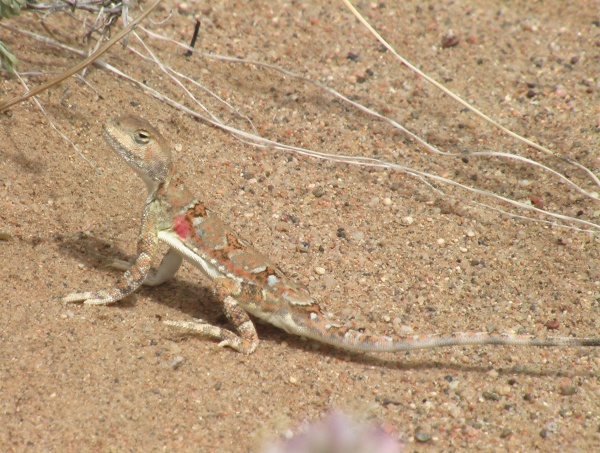Facts About Phrynocephalus versicolor
Phrynocephalus versicolor, commonly known as the variegated toadhead agama, is an intriguing species of lizard that inhabits the desert regions of China and Mongolia. This species was first described by Alexander Strauch, a prominent Russian herpetologist and former director of the Zoological Museum at the Imperial Academy of Sciences in St. Petersburg.
There are four recognized subspecies of this lizard, each possessing its own distinctive traits. Typically, the variegated toadhead agama reaches a length of approximately 13 cm, including its tail, which is longer than its head and body combined. These lizards have large scales with a rough texture, exhibiting colors that range from olive to leaden-grey, often adorned with dark transverse bars and patches of orange.
Adapted to desert environments, these lizards inhabit stony plains, slopes, canyons, and sand dunes with sparse vegetation. They can be found at impressive altitudes, sometimes exceeding 3,200 meters, and can endure extreme temperature fluctuations from -30°C in winter to 40°C in summer. The variegated toadhead agama is active from March to September and enters hibernation during the colder winter months.
Their diet primarily consists of small invertebrates. Additionally, these lizards exhibit interesting behaviors, such as collecting water during rainfall. Female agamas lay eggs during the rainy season, with an incubation period of approximately thirty days. The hatchlings emerge in a variety of colors and quickly begin to mimic the behaviors of adults, especially during rainy periods.
The variegated toadhead agama is classified as "Least Concern" by the International Union for Conservation of Nature (IUCN), indicating that their population is stable and there are no significant threats to their survival at this time.

 Russia
Russia